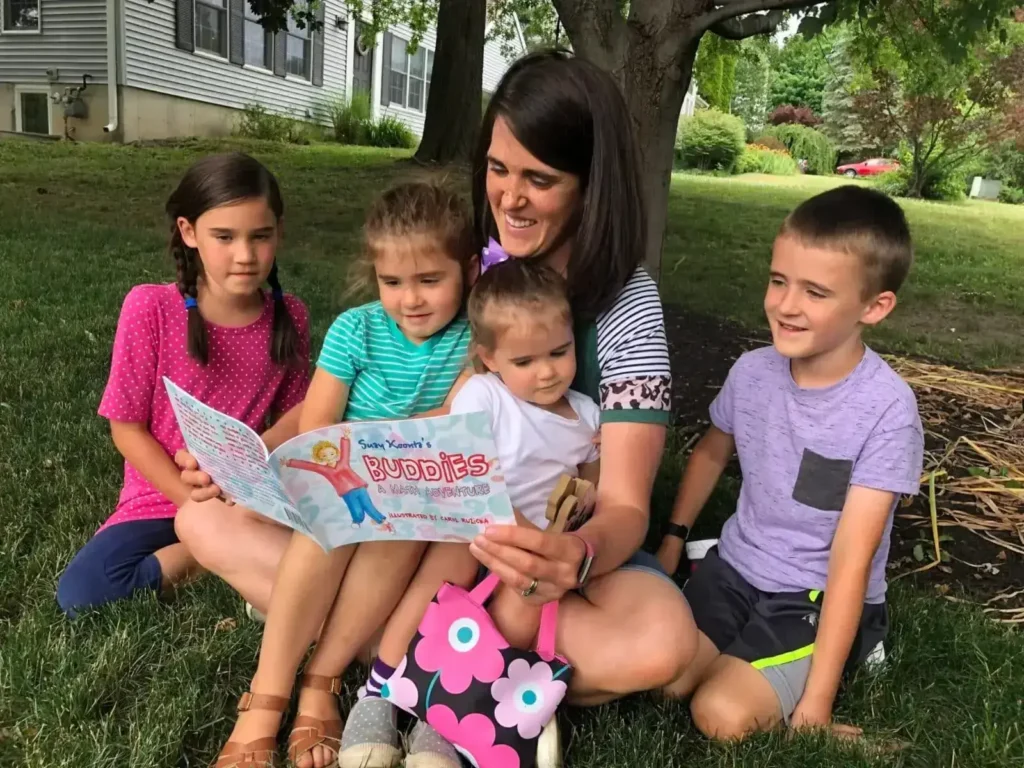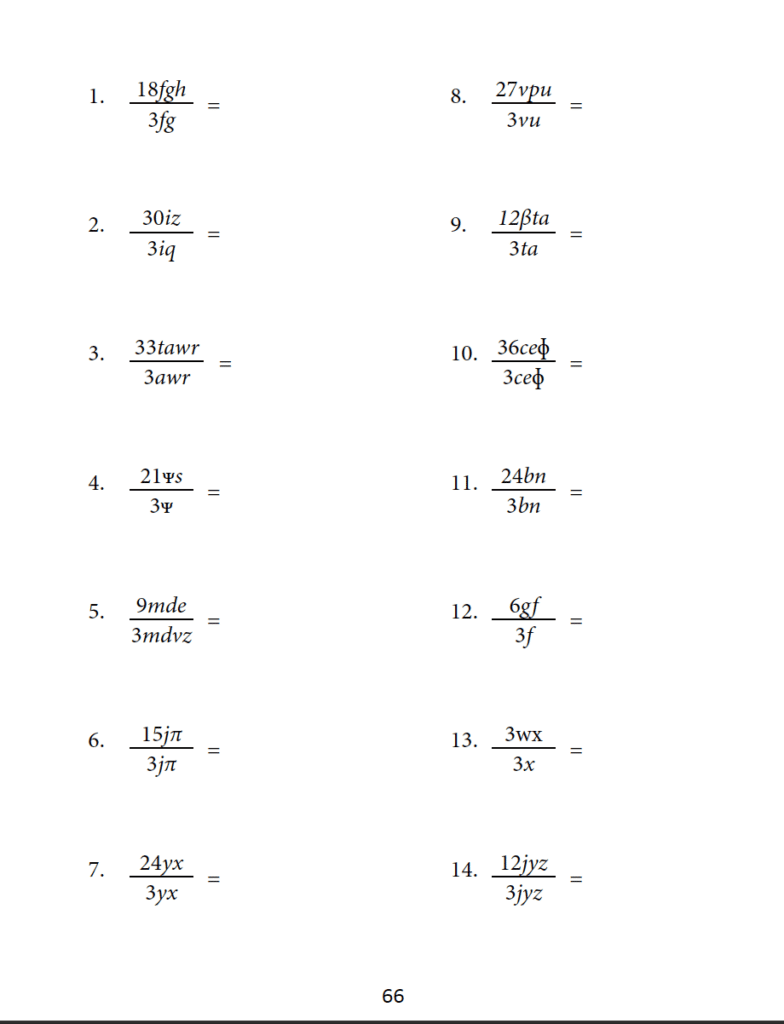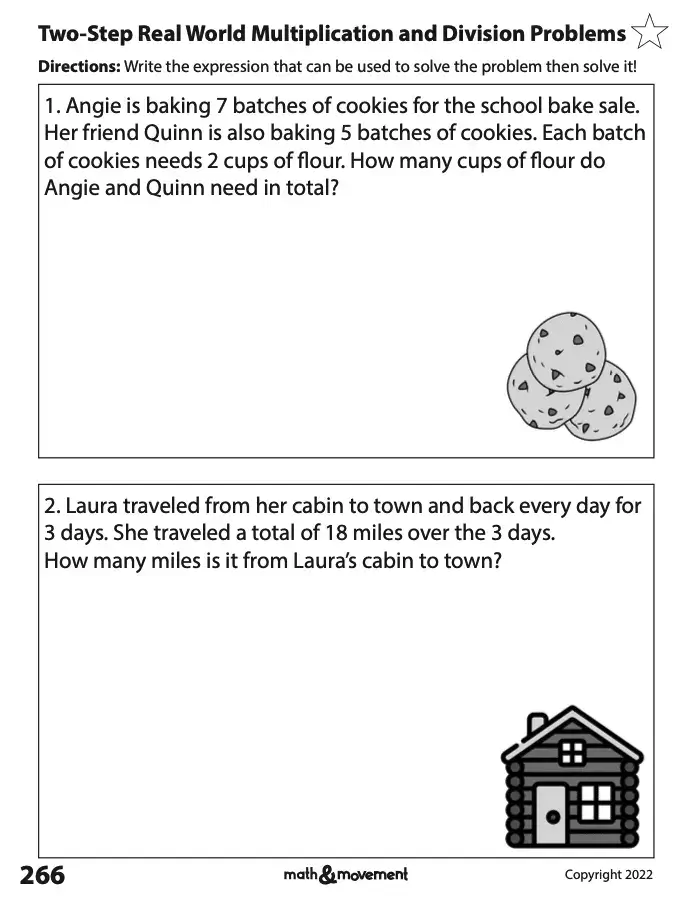
- Trusted by Over 2000 Schools Nationwide
- Top-Rated PD Provider ★★★★★ 4.77
- Save with our Kits & Packages – Shop Now! →

Choosing the ideal math books for your elementary students can be daunting, given the plethora of available options. Many textbooks emphasize different topics or learning techniques, so finding the perfect elementary math books for your unique classroom can be challenging.
When picking the appropriate instructional guides and workbooks for your students, it is crucial to consider a few questions:
Keep reading for our list of the best tested math books for elementary students, plus, a FREE copy of our Training Manual on movement-based learning strategies!
Another helpful method to remember when selecting elementary math books is the Five Finger Rule. This guide measures the readability of a math book, assessing how easily students of different ages can understand it.
To apply this rule, have a child read through a single page of a chosen book. Instruct them to hold up a finger for every word they don’t understand or can’t pronounce. The number of fingers they hold up by the end of the page indicates the book’s reading level.
For example, the book is too easy if the student raises one finger or no fingers. The workbook is the ideal reading level if they hold up two or three fingers. However, if they raise four to five fingers, the math book is probably too difficult for the child to read independently.

Math vocabulary can be particularly challenging since it’s where math and literacy skills come together. Evaluating a child’s reading skills is essential when choosing the correct math books for elementary students. Understanding mathematical terms is essential for academic achievement.
In this article, we will guide you in discovering which math books are perfect for your elementary students’ needs.
Here are Math & Movement’s top elementary math book recommendations, sorted by grade level:
Kindergarten math objectives focus on building foundational skills in basic mathematical concepts. Key goals include:
As such an important stepping stone, the Addition Marathon for Kindergarten eBook is a great resource and provides plenty of practice problems on every page. With 600 addition problems, this workbook will help your kindergarteners master addition!


In our storybook Honey: A Math Adventure, Sarah and her playful dog Honey apply their math skills in a fun and practical way. After Sarah teaches Honey how to count by fives, Honey applies this new skill by counting her food, toy balls, and bones.
When Sarah needs an activity for the 100th day of school, Honey shares her idea with Sarah, and together, they create an exciting adventure for Sarah’s class! Your students can follow along and practice their math skills with Sarah and Honey.
When selecting math books for first graders, educators should consider the importance of fluent addition and subtraction skills. Math & Movement’s Jump & Learn Addition and Subtraction workbook introduces these operations in an active, easy-to-understand way. This math book is meant to be used alongside our Count to 10, Skip Counting by 2s, and Number Word Hop floor mats.
This elementary math workbook intermixes practice pages with practical, real-world word problems. Throughout the book, the practice pages repeat addition and subtraction equations using the numbers 0 through 20. Students can simultaneously apply their fact fluency to real-life, age-appropriate word problems. The math book relates real-world problems in different ways to meet state standards. Students also learn how to determine the unknown number in an equation and how to compare numbers to one another.
This math book includes positive affirmations and colorful stickers, fostering an enjoyable environment for learning addition and subtraction. It’s the perfect tool to encourage young mathematicians to keep practicing!



Additionally, check out Addition/Subtraction Marathon eBook for first graders. This workbook provides students with even more practice pages. This elementary math book includes 40 pages with 30 problems on each page. It starts with 10 pages with addition to 10, and then 10 pages with subtraction within 10. Then, 10 pages with addition to 20, and 10 pages with subtraction within 20.
By second grade, students should be able to add and subtract within 20 fluently. The math book Jump & Learn Addition and Subtraction is a great resource to use at the start of the school year to help kids refresh their skills after summer vacation. Students who have never experienced movement-based learning may greatly benefit from it at this age.
We also have an Addition/Subtraction Marathon workbook for 2nd graders. Like the 1st grade version, this 40-page eBook covers addition and subtraction within 20 but includes 40 problems per page, so these older students have more practice for these frequently used equations.


Another one of our math storybooks is Buddies: A Math Adventure. In this book, Anne Marie learns odd and even numbers when she doesn’t have a buddy to play with at recess. Ms. McHenry, Anne Marie’s teacher, helps her understand by drawing a parallel between odd numbers and Anne Marie’s feelings of being left out.
Ann Marie goes on to find pairs of buddies and examples of odd and even numbers around the playground! At the end of this math book, educators can find Math & Movement’s lesson plan on operations and algebraic thinking regarding odd and even numbers for 2nd graders.
Third grade is a big year for students as they are introduced to more complex math concepts, including:
When searching for 3rd grade workbooks, it is important to remember that practice and repetition are key to mastering these new and unfamiliar concepts. Using a multi-sensory teaching approach can help make these new lessons fun and engaging, instead of frustrating or boring.
Multiply With Me is a complete student workbook that teaches multiplication through counting, movement, and multi-sensory techniques. The workbook includes forty-five lessons that cover multiplication by 2 through 12.
Multiply With Me is available as a paperback or ebook. Be sure to check out the detailed instructor guide as well!


A favorite among schools is our Jump & Learn Multiplication workbook. This book includes over 200 pages of practice problems for first-time multipliers to solve.
You can easily add movement to your lessons by having students solve the math problems by hopping on our Skip Counting floor mats. The process of learning multiplication becomes active, fast, and fun — all while students develop positive self-esteem with the affirmations and stickers included in the book.




Another great option for third grade math is our book Multiplication Mar-A-Thon. This workbook provides practice with multiplication by 2 through 12. This eBook contains 100 pages with your choice of either 30 or 60 problems per page.
Students can sometimes feel overwhelmed with too many problems in front of them. Other students need more of a challenge – so you can easily choose what best suits your students!
Oodles of Algebra is a 50-page ebook that introduces third graders to basic algebra. Students learn how to add and multiply variables as well as gain familiarity with exponents and enhance visual discrimination.


Our I Love to Cancel Workbook is a 56-page eBook that allows students to practice division by 3s, 4s, 5s, 6s, 7s, 8s, and 9s with variables and exponents.


Our new Multiplication and Division in the Real World books introduce students to both multiplication and division but take these operations to the next level with the inclusion of real-life word problems.
These math books for elementary students guide them as they practice skip counting, repeated addition, repeated subtraction, traditional multiplication problems, multiplication by a factor of 10, fact families, traditional division problems, and intermixed multiplication and division questions. Applicable word problems are gradually introduced to students. First, students are asked to identify which operation they should use to solve a problem; then, they are instructed to solve it. The books also include two-step word problems that require using two operations to find the solution.
The Multiplication and Division in the Real World books also utilize our Skip Counting floor mats. There are pages explaining how to solve each problem using the mats, so students will be active and moving as they work. Book A covers multiples 2 through 6, while Book B covers multiples 7 through 12.


Both books include positive affirmations and fun stickers, so mastering each new multiple becomes a rewarding experience!


An excellent math book for fourth graders is Freddy Fibonacci’s Awful Allowance, a fun story that helps students learn Fibonacci’s number sequence. In this math storybook, young Eliza asks her mother to give her an allowance that uses Fibonacci numbers. Her mother agrees, and Eliza gets an allowance each week after completing her chores. After six months, her allowance increased substantially!
At the end of the book, educators can find Math & Movement’s lesson plan for Fibonacci numbers. This lesson plan covers operations and algebraic thinking on patterns for fourth graders.
We’ve covered math books for elementary students, but what about books for the teachers?
Our Math & Movement Training Manual is a fantastic tool for teachers. This book tells educators how they can start implementing kinesthetic learning strategies into their instruction. It includes over 250 physical movements that teachers can do with their students in the classroom, in the hallway, at their desks, or in the gym.
These movements allow students to practice math while being physically active. They are perfect for energizing students during slow afternoons or allowing them to release some excess energy when they’re feeling fidgety. You can even do one of these movements during a faculty meeting to wake everyone up!
Best of all, these movements do not require any materials – only your bodies! These exercises, stretches, and cross-body movements are ideal for kinesthetic learners and any student who wants to learn with their body in addition to their mind.
You can receive a FREE copy of our Training Manual, simply for clicking on this blog! Enter your email in the box below, and we’ll send you the book as a PDF!
Movement isn't just for recess
Want to get started with movement-based learning right now? Enter your email to get our training manual with over 250 active math movements. No materials necessary!

See how simple adding movement can be!
Next, our Hop to Success series is another great introduction to kinesthetic learning while meeting your school’s curriculum and state standards. These guides provide a detailed approach to learning, understanding, and practicing the concepts in specific education standards, including Common Core State Standards and NYS Next Generation Standards.
Using these books in combination with Math & Movement kinesthetic products and activities supports the existing curriculum, enriches students, and allows educators to assess skill levels. Hop to Success comes in versions for 1st, 2nd, 3rd, 4th, and 5th grade.
Our Math Kits already include many of these math books for elementary students, in addition to our kinesthetic learning materials! We have assembled collections of our floor mats and books corresponding to specific grade-level concepts. If you see an additional mat or book you’d like for your classroom or school, these can easily be added to your order.





Math & Movement is a multi-sensory approach to teaching math that incorporates physical exercise. Children are naturally active learners, using their bodies along with their minds to understand new concepts. Math & Movement is a supplemental program that harnesses a child’s natural desire to move and turns it into enthusiasm for learning math.
Reading books is typically a sedentary activity, but with Math & Movement, working in an elementary math textbook can be an active, energetic, and fun task! Consider adding movement to your math lessons today with Math & Movement and our math books for elementary students.
Movement isn't just for recess
Want to get started with movement-based learning right now? Enter your email to get our training manual with over 250 active math movements. No materials necessary!




Subscribe to Our Newsletter
We never share or sell your data.
Please leave your email and a quick note for us. We will get back to you soon! In the meantime, here are answers to some of our most common questions:

Enter your email to get our training manual with over 250 active math movements. No materials necessary!
We never share or sell your data.